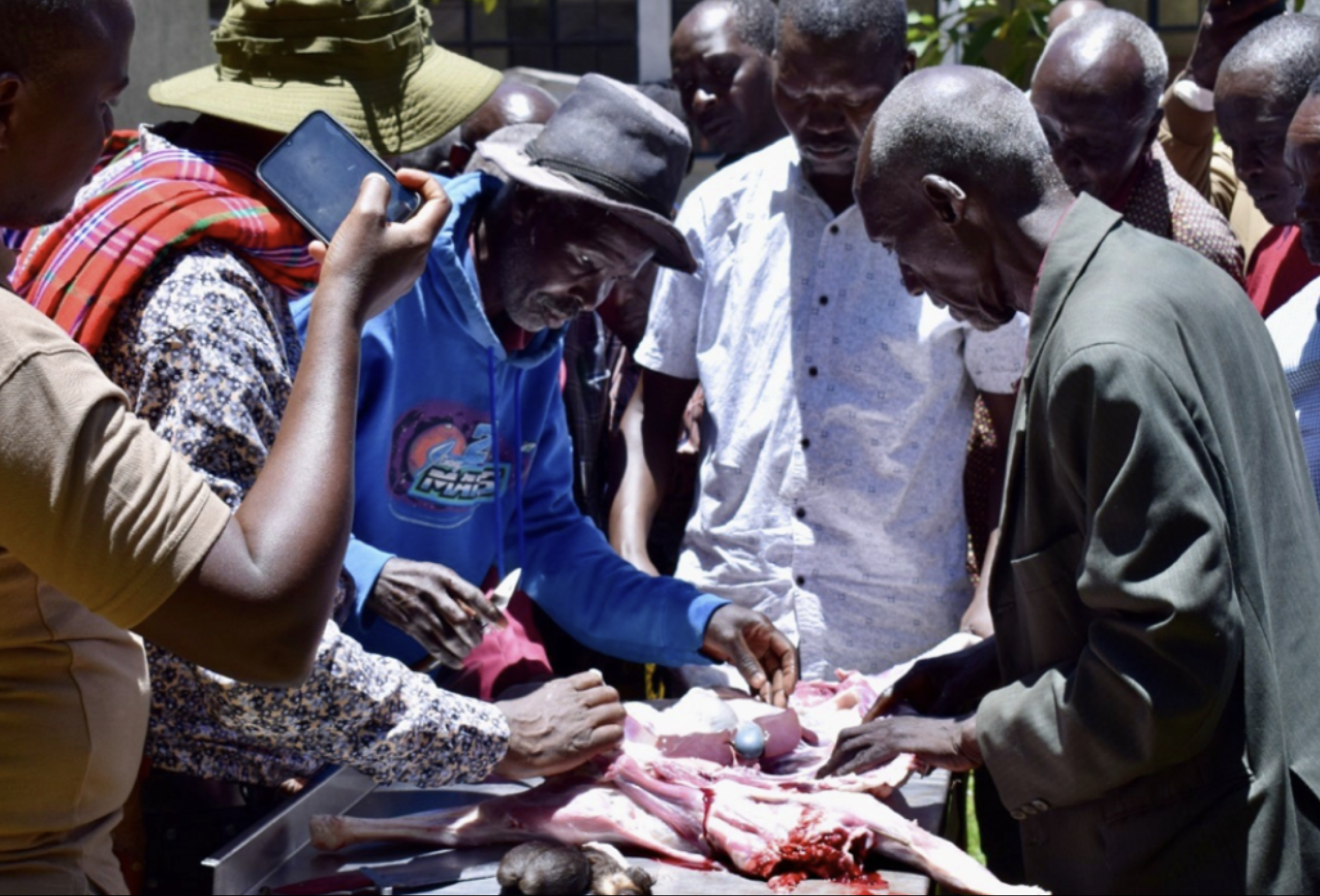 Indigenous forecasters predict the weather by reading the intestines of a slaughtered goat. Photo ILRI.
Indigenous forecasters predict the weather by reading the intestines of a slaughtered goat. Photo ILRI.
For instance, in Western Kenya’s sacred Nganyi forest shrine, elders study the behaviour of tsiswa ants and the delayed flowering of muyeye trees with the same scientific precision their ancestors used for generations.
While satellite screens displayed predictions of minimal rainfall during last season’s devastating drought, these traditional forecasters correctly warned of a different pattern—a false start followed by violent deluges.
This scene, playing out across the Horn of Africa, reveals a profound truth: the future of climate resilience lies not in choosing between ancient wisdom and modern technology, but in their intelligent fusion.
The Precision of Traditional Knowledge is also portrayed by Afar pastoralists in Ethiopia who have developed sophisticated methods based on observing livestock behaviour, star constellations, and plant phenology to guide crucial seasonal migrations.
Further South, Maasai elders assess rainfall prospects by examining fat deposits around cattle kidneys and monitoring the flowering patterns of indigenous plants like the Oloirien tree.
To ensure these methods are not conjecture, research supported by the Intergovernmental Authority on Development (IGAD) Climate Prediction and Applications Centre (ICPAC) demonstrates that traditional forecasts in Ethiopia and Kenya can predict rainfall onset with 94 percent confidence and forecast volume with 84 percent accuracy—rates that frequently exceed conventional meteorology for specific micro-climates.
Dr Joyce Kimutai, a leading Kenyan climate scientist and IPCC author, explains: “This isn't about discarding meteorological science. It's about enriching it. Indigenous knowledge gives us historical and geographical granularity that satellites simply cannot provide.”
Furthermore, the synergy between indigenous and scientific knowledge is already saving lives as ICPAC facilitates forums where satellite data and indigenous forecasts are discussed together, creating consensus-based outlooks broadcast through local radio networks in vernacular languages.
Case in point, the Kenya Meteorological Department now blends traditional Nganyi family predictions with scientific forecasts, producing more accurate and culturally trusted weather information for Western Kenya communities.
This means that traditional forecasters provide location-specific information while meteorological data offers broader regional patterns, creating a comprehensive early warning system that communities trust and use.
Nevertheless, the challenge lies in transforming promising pilot projects into a regional doctrine. IGAD Executive Secretary Dr Workneh Gebeyehu recognizes that the region’s peace and stability are fundamentally linked to climate resilience.
“A truly resilient Horn of Africa requires formal frameworks integrating traditional and scientific knowledge systems,” he reiterates.
Dr. Gebeyehu notes that this integration demands deliberate investment in elder-youth mentorship programs to preserve knowledge and empowering women's cooperatives as primary disseminators of climate information, and weaving indigenous wisdom into educational curricula.
“Regionally, establishing an IGAD Traditional Forecaster Network would formalize collaboration between traditional experts and national meteorological agencies,” he assures.
Meanwhile, charting the path forward, the ultimate shield against climate change will not emerge from laboratories alone, but from the convergence of two powerful knowledge systems.
As communities across East Africa face increasingly volatile weather patterns, the marriage of ancient observational methods with modern scientific tools offers the most promising pathway to resilience.
The vision is clear: a Horn of Africa where a pastoralist’s observation in Somalia for example, enriches regional climate models that protect farmers across the region and where traditional/scientific research hubs drive climate response.
This convergence represents more than meteorological innovation—it embodies a fundamental recognition that sustainable climate adaptation must honour both scientific advancement and indigenous heritage, creating forecasting systems that are not only accurate but also culturally resonant and community-trusted.













